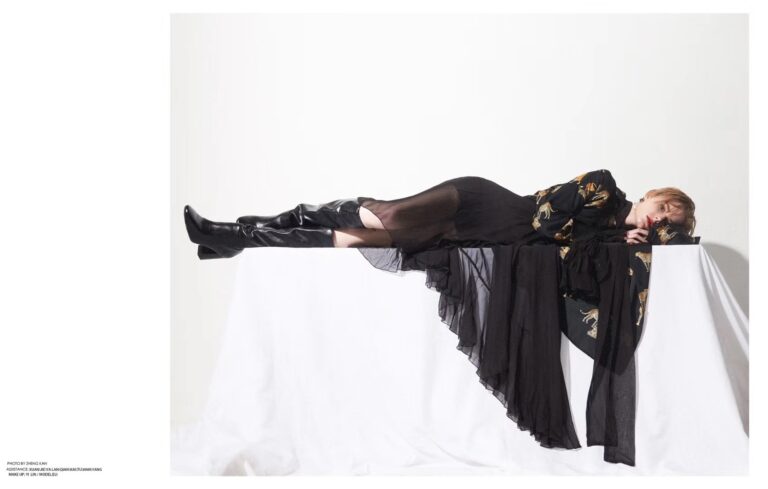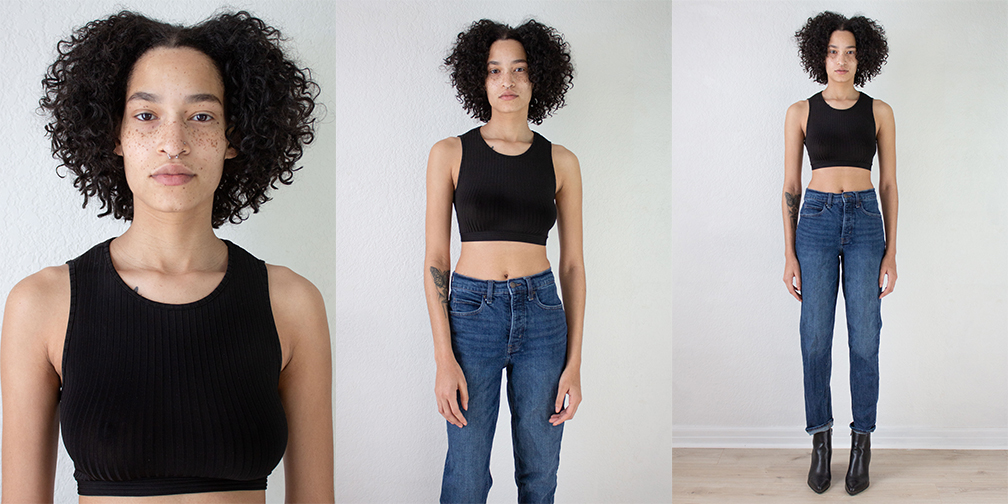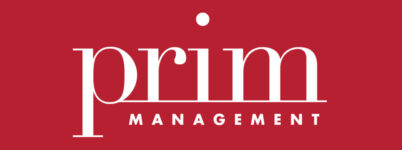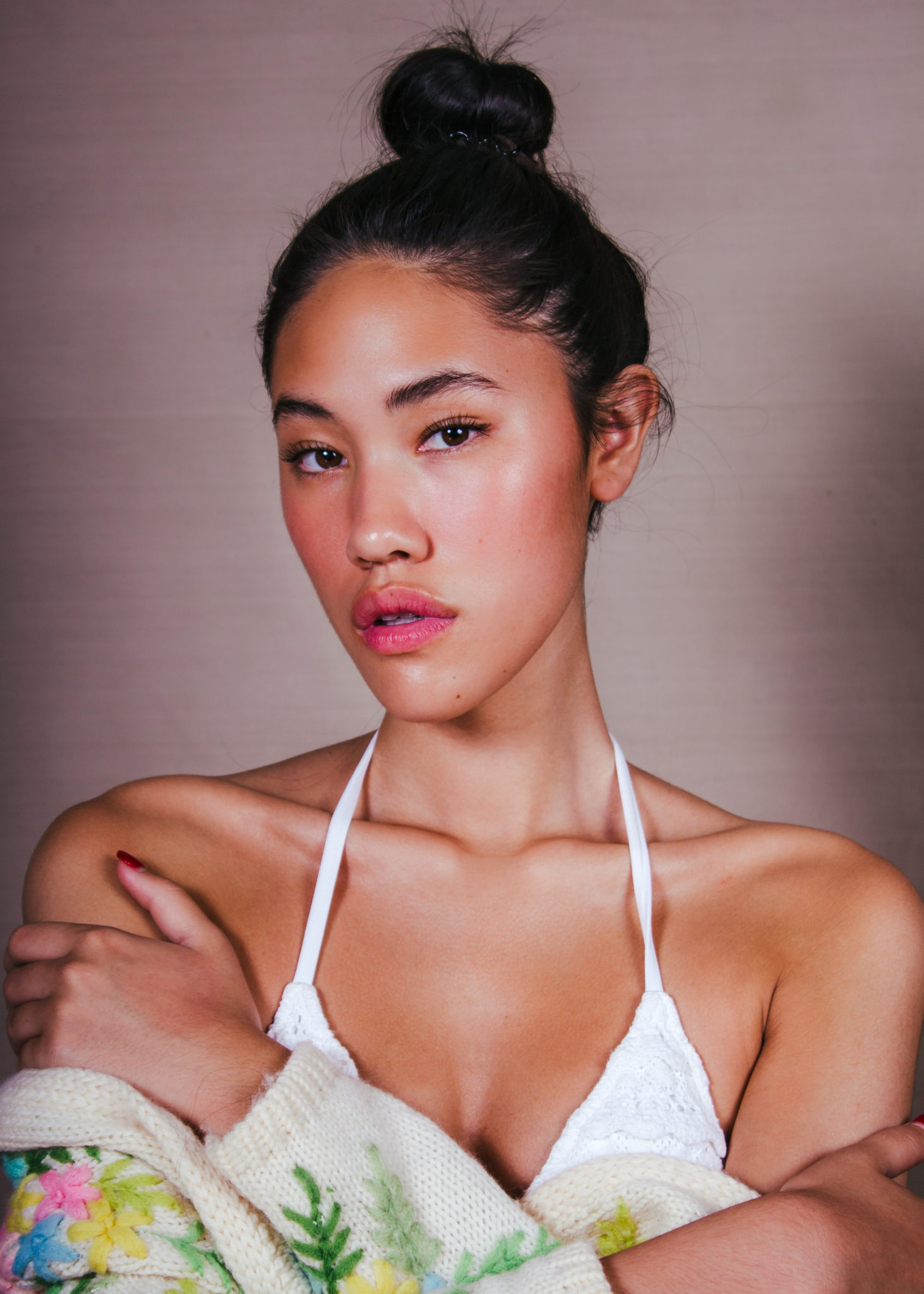GET SCOUTED.

To be considered, carefully review the instructions and FAQs below, then complete a submission.
We are unable to respond to every submission we receive and will request an appointment if we feel there is potential to successfully market a prospective model to our clients and agency partners.
We do not host regular open calls and are unable to accommodate walk ins.
We do not operate a children’s division.
Please include the following in your submission:
– One clear full length photo in fitted clothing
– One clear three-quarter shot from the knees up
– One close show, from the waist up, no makeup, hair up and away from the face
– Please include your height without shoes on, current clothing sizes or measurements and contact information including your pronouns.
– For tips on optimizing your submission check out the FAQs and examples below.
NOTE: Minors should only be submitted by a guardian or with a guardian included on the email
Frequently asked Questions
What is a mother agency?
A mother agent is so much more than just an agent. A mother agent provides models with training, knowledge of the fashion, ad, and talent industries, confidence in their ability and counseling about the ups and downs of the industry; in short, their foundation.
The most common misconception about modeling is that it is easy. Anyone who has ever modeled will tell you the opposite. Modeling is about storytelling, referencing emotions and conveying them through nothing more than your body and face. On top of all that, the model can’t forget about the product. Whether selling a story, idea, lifestyle, or just a sweater, the product must always be at the forefront of the model’s focus.
There are dozens of modeling “formulas” touted by coaches, schools, photographers, agents, etc., all over the world. Formulas ALONE do not work, because they remove the most important part of the craft, the individual. No two models are alike. Their experiences shape their expression, the way they move, the way they walk, and the way they respond to the world around them. It is the mother agency’s job to cultivate that “it” factor.
What makes a model?
There are a lot of misconceptions about what it takes to be successful in the modeling industry. These are just a few traits required:
– Good genes: A large part of an aspiring models career is determined by genes long before they get discovered. Height and the ability to maintain a model figure in a healthy manner are the first requirements.
– Determination: Models spend most of their time being rejected for one reason or another. Sometimes the client wants someone with a different hairstyle, sometimes personalities don’t mesh well, sometimes the client has seen 300 other models and can’t remember you. A model must be able to hear “no” constantly and be able to move onto the next casting without taking it personally.
– Assertiveness: It often surprises me when a stranger begins systematically liking all of my posts on Instagram, because they see I am an agent, in hopes that I will check them out and scout them. On the rarest of occasions, it works. Agencies take submissions for a reason, and clients hold castings for a reason. Receiving a submission or making a distinct impression in a casting tells us an aspiring model is not afraid to hear no, not afraid of critique, and not afraid of taking putting themselves out there.
– Patience: Everything we do is about timing; timing of the markets, timing of trends, timing of the model being ready. As an agent, I juggle all of these things until they all drop at once. If a model is not ready, or travels too soon, they can ruin their own reputation, burn bridges for the agency, or burn themselves out. Those are not the kinds of risks we want to take.
– Discipline: Just like an Olympic athlete, being a model is much more than performing on the job. If an aspiring model is serious, they must be ready to live the lifestyle of a model: being mindful of what you put in your body at all times, not going out every night, committing to the craft and being willing to study, learn, and immerse oneself in the industry, to be a business person at all times and remember to represent yourself well too.
– Confidence: If you don’t have it when you start, fake it ’til you make it. The trick is to remember that everyone else is faking it ’til they make it too.
– Sense of self: An understanding of who you are, how you, as a muse, fit into the industry is equally as important as having the physicality. Not every model is meant for every client. In a world based on personal aesthetic, everyone is not everyone’s cup of tea. Always remember, in fashion, for every brand, there is an opposite, and there is always another collection, season, or casting.
– Interest: This may seem obvious, but personal interest is also quite important. There are plenty of “model-looking” folks out there who have no interest in modeling. A lot of people an agent comes across when scouting have been approached numerous times. Sometimes they become interested after hearing it a few times, sometimes they have other plans. It is important to model based on your own passion for the industry and the craft, not because of outside pressure or opinion.
What does it take to become a model?
At PRIM we aim to keep expenses at a minimum by not charging for comp cards, web fees or training to PRIM represented models. Below is a breakdown of where other expenses might arise when a model is working toward placement:
– Style: Anymore, it is not enough to just be good looking, a model must look the part head to toe. Since we are in the fashion industry, this may mean some wardrobe updates will be in order when the time for castings, travel, etc., comes.
– Hair/Skincare: Sometimes a model must change their look to become more competitive or differentiate theirs from the looks of other models. This could mean a hair cut, a new color, etc. Models may also have skin issues that need attention before they can really begin shooting, so a visit to the dermatologist is sometimes necessary.
– Time: Age can be a factor if a model gets started quite young. At PRIM, the earliest we will start is fourteen, any earlier and the model's odds of burning out before opportunity arises skyrocket. If the model starts preparing and learning before they are actually able to work, the smaller costs can add up over time. However a young model should not necessarily start investing monetarily until they are closer to travel. An older model, who is ready to travel, but just needs experience might spend less because the development process can be shorter.
– Fitness/Health: Modeling requires fitness regardless of the area or division of the industry a model is working in. For some models this means cleaning up their diet, joining a gym, investing in exercise equipment, etc.
– Paid Testing: Paying for images is something we only recommend once a model has enough skill and ability to get the most out of the investment. Timing of paid tests is also important. Images, trends, and looks cycle in and out of style rapidly and images should be their freshest at the moment the model is preparing to travel or be presented in another market.
– Travel: Depending on the market, agency and season, a model may have some or all of their expenses advanced to them by the agency they are being placed with. This is not charity. The model works to pay off that debt out of their wages.
– Knowledge of the Business: Self-education is something that is entirely possible in the modeling world. We encourage all of our models to take as many art classes, acting classes, dance classes, etc., as they can and to explore their interest in the industry. As in any industry, it is important to know the successes and failures of those who came before you.
Do I need professional images before I submit?
You do not need professional images to be considered, but please note in your submission if you have them on hand, so we may request them if we are interested in setting up an appointment with you.
How do I create the best submission possible?
To give yourself the best shot at an appointment request, and ultimately representation, here are some tips for creating the best submission:
– Effort – Yes, it takes more time than copying/pasting from Instagram, Facebook, etc., but it is important to submit photos that optimize what agencies are looking for. Taking the time out to submit photos like the examples below also shows genuine interest and professionalism.
– Lighting – Find indirect lighting near a window or on the shady side of a building, under a porch or in an open exterior doorway. This softer light will allow us to see all of your features without any harsh shadows. Use natural light whenever possible as artificial lighting can change the skin tone, which is typically unflattering.
– Clothing – Wear fitted clothing so the people reviewing your photos can see your silhouette, proportion, how clothes fit you, and your posture. Avoid busy prints, large logos/graphics, and loud colors like neons.
– Makeup/Hair – Less is more. Wear concealer where absolutely necessary, because we need to see you for you without all the bells and whistles. We can also spot contouring ten miles away. Hair should be up, back and away from the face.
What's the ideal height for models?
At PRIM we represent models based on current industry trends, standards, and client demand, while always aiming to create space for underrepresented beauty and imagine new possibilities.
The recommended minimum height for models working in "women's" samples is 5'8".
The recommended minimum height for models working in "men's" samples is 6'.
While we do represent minors beginning at 14, we do not operate a children's division.
Close-Up • 3/4 • FUll-Length


